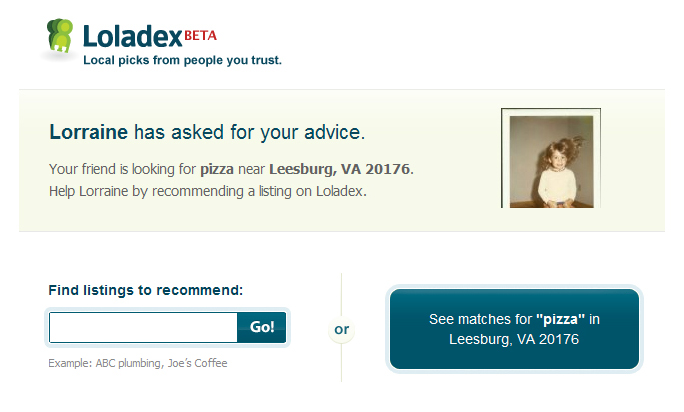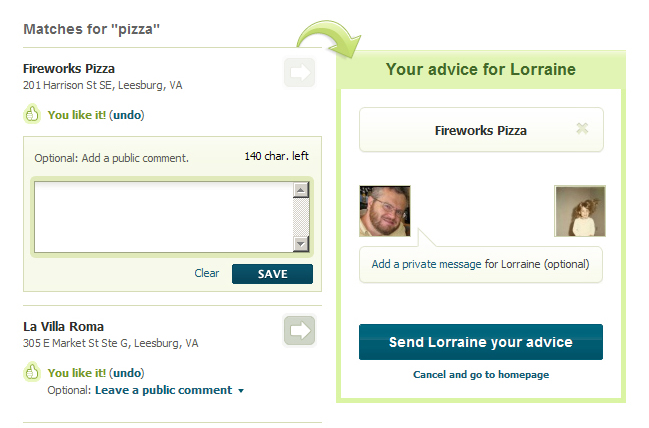by Laurence | Aug 28, 2011 | Local search
So, another flurry of stories about fake reviews on Yelp, TripAdvisor, and elsewhere — this time prompted by a Cornell algorithm that supposedly can, with 90 percent accuracy, spot a bought-and-paid-for fake.
(The New York Times and NPR, among others, covered this.)
As I wrote several years ago, it’s getting ever harder for humans — including me — to identify fakery. It’s nice that an algorithm can improve the odds, at least for now, but let’s not get ahead of ourselves:
- Even the best algorithm won’t finger a talented faker, and it also won’t identify a talented programmer who is posting fake reviews algorithmically. (I don’t know for a fact that the latter occurs. But since I can imagine a way to do it, I expect someone smarter than me is already making money at it. Story of my life.)
- Publicity about fake-sniffing algorithms and their methodologies will increase the average “quality” of fake reviews, making them even harder to spot for humans and algorithms alike. We’ve seen this type of arms race before: Algorithms are like antibiotics; they invite the enemy to evolve.
There’s no foolproof way to spot a fake review. However, I do have a foolproof way to spot a genuine review:
Was it written by a friend? If so, it is genuine.
Evolve around that!
by Laurence | Aug 15, 2011 | Loladex

OK, first some background.
People like to ask for recommendations on Facebook. This was becoming evident in 2008; by now it’s entrenched behavior. Mostly people ask via their status. Last month, for instance, my sister asked:
Need recommendations for semi-foodie restaurant in NYC that a chef would like.
She quickly got a bunch of referrals from her friends, including a recommendation for a nice place called Dell’Anima.
Such exchanges happen countless times each day on Facebook (and on Twitter, and elsewhere), and they usually work quite well. But from where I sit, they also leave unfulfilled opportunities.
- First, an opportunity to enrich the current interaction. My sister’s friends made their recommendations via plain old typing, without tags or links, so Facebook didn’t “know” that Dell’Anima is a restaurant. As a result, it didn’t provide a phone number, a star rating, a Web site, reservations on OpenTable, or even just the relevant Facebook page for Dell’Anima. Nor did it provide social context: Some of my sister’s other friends might already have “liked” Dell’Anima elsewhere, which would help her decide.
- Second, an opportunity to enrich future interactions. Unstructured recommendations just float off into the ether after they’re read. If another friend asks the same question tomorrow, the person who recommended Dell’Anima will have to type the same answer all over again. Instead, shouldn’t her recommendation be saved and then displayed to her friends in other contexts, without any work by her?
Facebook has economic reasons to address these needs, and it’s started to do so. It’s trying to add structure by suggesting tags as I type, for example; presumably its suggestions will get better once it can analyze the meaning of my words in real time.
And Facebook still owns everything I’ve done on the service, so maybe I’ll wake up tomorrow and it’ll have extracted, retrospectively, every restaurant recommendation I ever made. Then it could offer to “like” all those places for me.
I’d welcome that, if it worked properly.
Back in 2008, though, recommendations weren’t high on Facebook’s agenda. The plan was — my plan was — that users would share advice via a structured application, not via comments. A “Recommendations” app could ultimately become part of the standard Facebook suite, like Questions is now.
The approach wasn’t crazy then, and it still could be viable today. But it presents a challenge, since using an app will always be harder than typing “Dell’Anima FTW.”
So, back in 2008, here is how we tackled it.
Your friend wants advice: She needs to find a local place that serves good thin-crust pizza. Ideally you see her question in your own news feed, but maybe you get an e-mail or see a Facebook notification (screengrab at top of this post).
Whatever the prompt, we want you to click into the Loladex application. Assuming you’re already a Loladex user (which is a whole other topic), this is what you see next —

(I’m omitting the Facebook stuff that surrounds the app.)
Some good things about the page above: It shows your friend’s name and Facebook photo, which makes this a personal interaction; it recaps the question; it looks nice.
Not so good: It requires an immediate choice between two paths, and we don’t explain the options very well. If we stuck with this approach, better language might have been:
Recommend a business by name, with a button that says “Find“; or
See all matches for “pizza” near Leesburg, VA 20176
Also, it should include the additional info your friend provided: She’s looking for thin-crust pizza.
But actually, we probably should have skipped that landing page entirely and combined it with the next page, which looked like this —

In the listings on the left, anything you’ve previously liked is at the top, since that’s what you’re likely to recommend. (Note: At the time you couldn’t “like” regular businesses on Facebook itself.)
Our aim here was to mimic real-life advice, where people bundle several suggestions and add commentary: “ABC is awesome, but doesn’t do thin-crust. XYZ is a hike, but has excellent thin-crust.”
Hopefully the model is clear: Click the arrow to add each business to your recommendation. After adding a business the page looks like this (just the relevant part shown) —

Anything you write on the right-hand side is between you and your friend. You can delete a business from your recommendation by clicking the “X.”
On the left-hand side, you can add public comments about each place you’ve recommended. Note the 140-character limit on public comments: I’m a believer in such limits, but 140 was just trendiness. 200 would have been better.
I believe that recommending a place also automatically “liked” it, and that you could undo the “like” without undoing the recommendation.
And that’s basically it. Add a note, click to send.
A side question: Should the interaction be private, as shown here, or visible to all friends so they can chime in? In 2011 the instinct is to make it all a quasi-public discussion, but in 2008 we worried about scenarios: Pizza restaurants are fine, but what if you were recommending a doctor and wanted to add a note about your own experience?
In the next post: How users asked for recommendations on Loladex.
by Laurence | Aug 12, 2011 | Loladex
I made peace long ago with the ephemeral nature of online products. Unlike some folks, I don’t routinely keep archives of what my various Web sites used to look like — though I do sometimes visit the Wayback Machine to refresh an imperfect memory.
Loladex was different, however, and I did take some screenshots before it shut down. I had a few reasons:
- For better or worse it was my site, more than anything else I’ve worked on.
- I knew the Internet Archive wouldn’t work because (among other things) Loladex required a logged-in state on Facebook plus dynamic searches of licensed data.
- I wanted a record of the UI solutions we created, so that I could improve on them in future products.
This post is first in a series that’ll discuss & illustrate the features of Loladex that I think are still relevant today. In all cases the UI is a work-in-progress, frozen now in time. We learned many lessons, but I’m certain we ended far from an optimal solution — if such a solution even existed.
Before I start that, however, here’s some catch-up on Loladex.
Loladex launched in spring 2008. It was a Facebook application, meaning it was accessed via Facebook.com by users who had signed in. With the exception of games and Facebook-run applications, this approach is mostly passé now.
Loladex allowed you to find local businesses — restaurants, plumbers, psychiatrists — that had been recommended by your friends. If none of your friends had already recommended, say, a plumber, you could ask them to do so.
A true online equivalent to word-of-mouth recommendations: It’s not an original idea, but in 2008 no one had made it work yet.
And indeed, that’s still the case in 2011.
In the next post: How users made recommendations on Loladex.




